A mission to touch the Sun, with the fastest spacecraft in history
New York to Tokyo in less than a minute, that’s how fast NASA’s Parker Solar Probe can go.
Designed to study the Sun’s atmosphere, the Parker Solar Probe will go closer to its surface than any spacecraft before it. Things are going to heat up real quick.
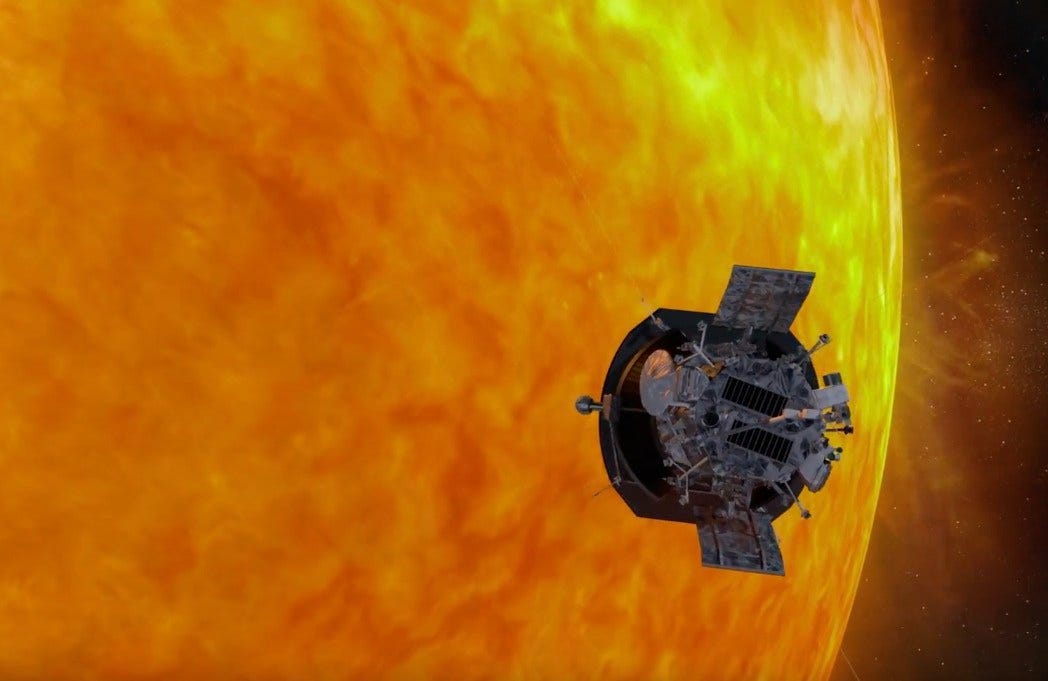
To understand NASA is sending the Parker Solar Probe to the solar atmosphere, we first take a look at why its important to study the Sun and how it affects us.
The solar wind
Contrary to the temperature at the Sun’s surface, which is ~6000 degrees Celsius, its outer atmosphere (the corona) is heated up to millions of degrees. And we don’t know exactly why. Such high temperatures result in a release of highly energetic charged particles (electrons, protons, alpha particles, etc.) from the corona, collectively called the solar wind.
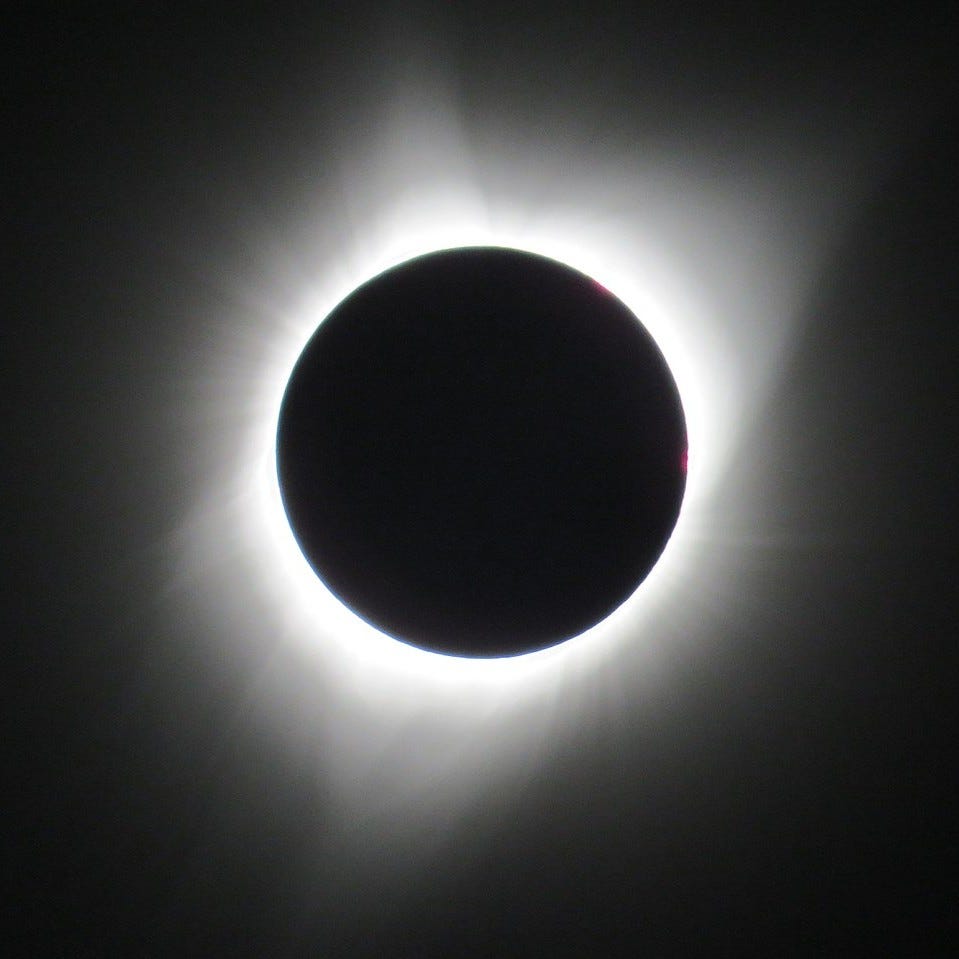
The charged particles in the solar wind carry the Sun’s magnetic field outward into the solar system at high speeds. As the Sun rotates, its magnetic field twists into a spiral, affecting the release of charged particles in a similar way. The Sun’s magnetic field is thus carried outward into the solar system in the form of an Archimedean spiral.
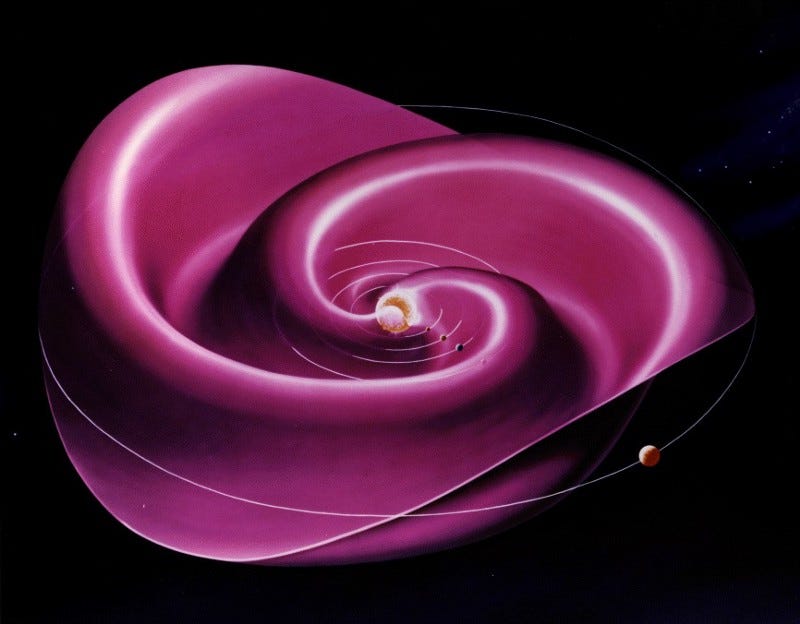
When the charged particles in the solar wind approach the Earth, they first hit the Earth’s magnetosphere, the area where the Earth’s magnetic field is dominant. The solar wind disrupts the Earth’s magnetosphere as it compresses it on the Earth’s day side and extends it on the night side. The Earth’s magnetosphere is thus shaped by the solar wind.
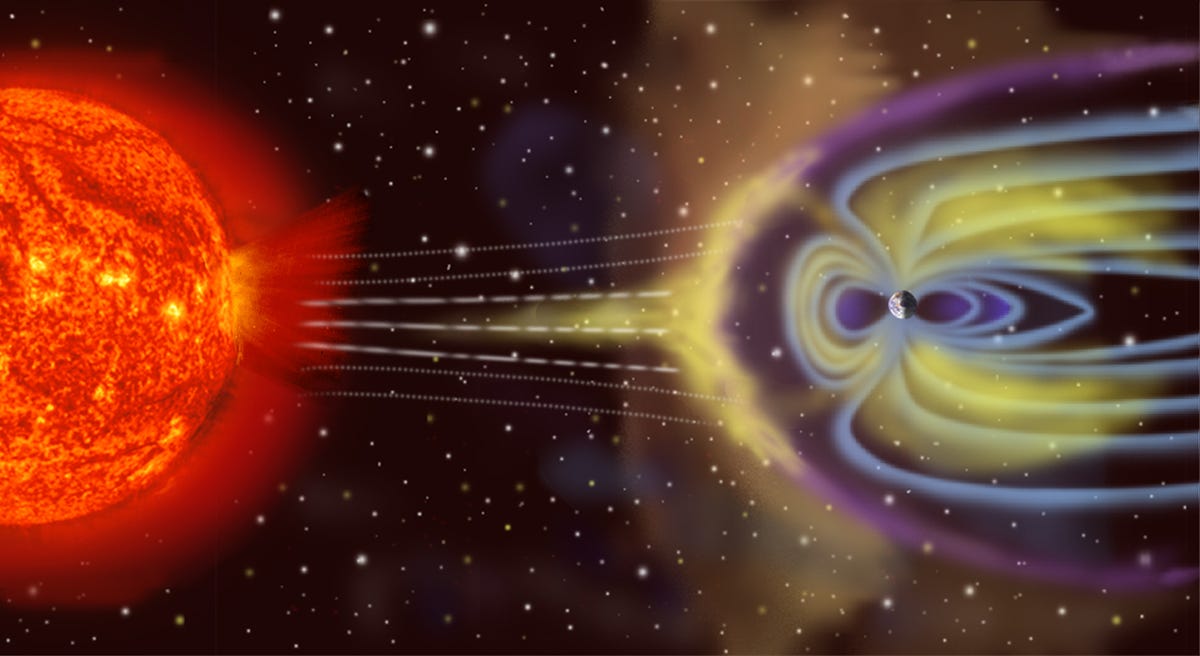
The solar wind’s interaction with the Earth’s magnetosphere deposits large amounts of energy back to the Earth causing widespread changes to our atmosphere. One of the good effects of this interaction are beautiful Auroras.
Solar storms and its effects on Earth
The solar wind often carries highly energized magnetic storms ejected from the Sun called solar flares, and occasionally even more energetic versions of it called coronal mass ejections (CMEs). The energy unleashed by these highly magnetized storms is equivalent to millions of hydrogen bombs.
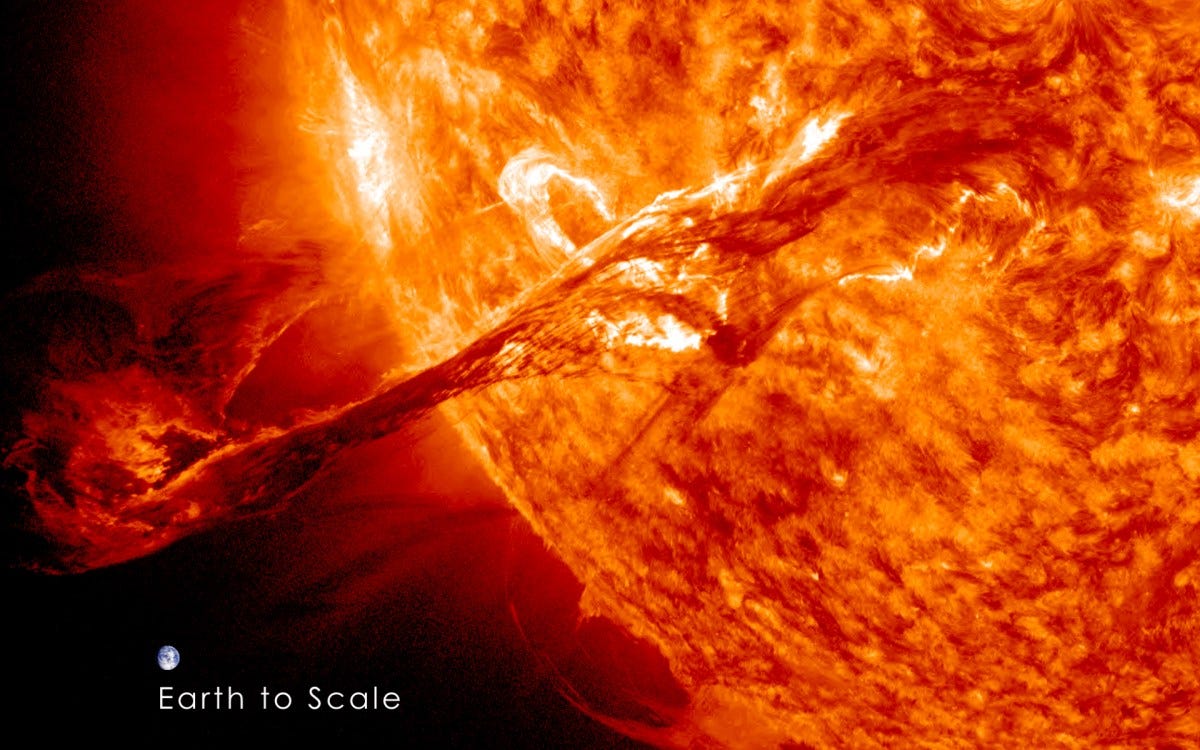
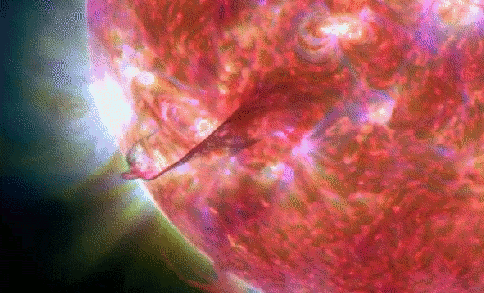
When these storms reach Earth, they can have some serious effects despite our protective magnetic field. The solar storms of 1859, 1882 and 1921 all caused telegraph services to stop working, initiating fires and in some cases even delivering fatal shocks to telegraph operators. Likewise, the solar storm of 1960 caused widespread disruption of radio communication services.
The effects of massive solar storms on Earth would be much more catastrophic in today’s day and age. A 1859 like solar storm occurring in the present day can cause many problems like:
- Disrupt major electrical systems on Earth causing worldwide power outages for weeks, months or even years.
- Physical damage to our satellites, causing them to malfunction or fail entirely.
- Disruption of our communications infrastructure, including GPS satellites.
- Subject astronauts to lethal doses of radiation. This is a major concern for future astronauts on the Moon or Mars, where there is little to no shielding from such dangerous storms.
In a society increasingly dependent on technology, it would be foolish to not understand the weather patterns of the Sun, its effects on Earth and setup our infrastructure accordingly. We wouldn’t really be an intelligent species if we ignored the most important object that directly affects the Earth and life on it.
It would also be foolish to not be curious about the nature of the Sun and stars like it, and not just because Earth’s life depends on it. Some of the long-standing questions surrounding the nature of our Sun are:
- Why is the Sun’s outer atmosphere (corona) much hotter (millions of degrees Celsius!) than its surface (~6000 degrees)?
- What mechanisms generate highly energetic particles that are carried in the solar wind with high velocities?
- What is the structure of the magnetic field in the corona? How do these fields behave to make all these dynamics happen?
It is the quest of answering questions like these that makes us human.
Enter Parker Solar Probe — The fastest spacecraft in history
The Parker Solar Probe was successfully launched on August 12, 2018 onboard the powerful Delta IV Heavy rocket, and was the fastest spacecraft at launch, beating the New Horizons record.
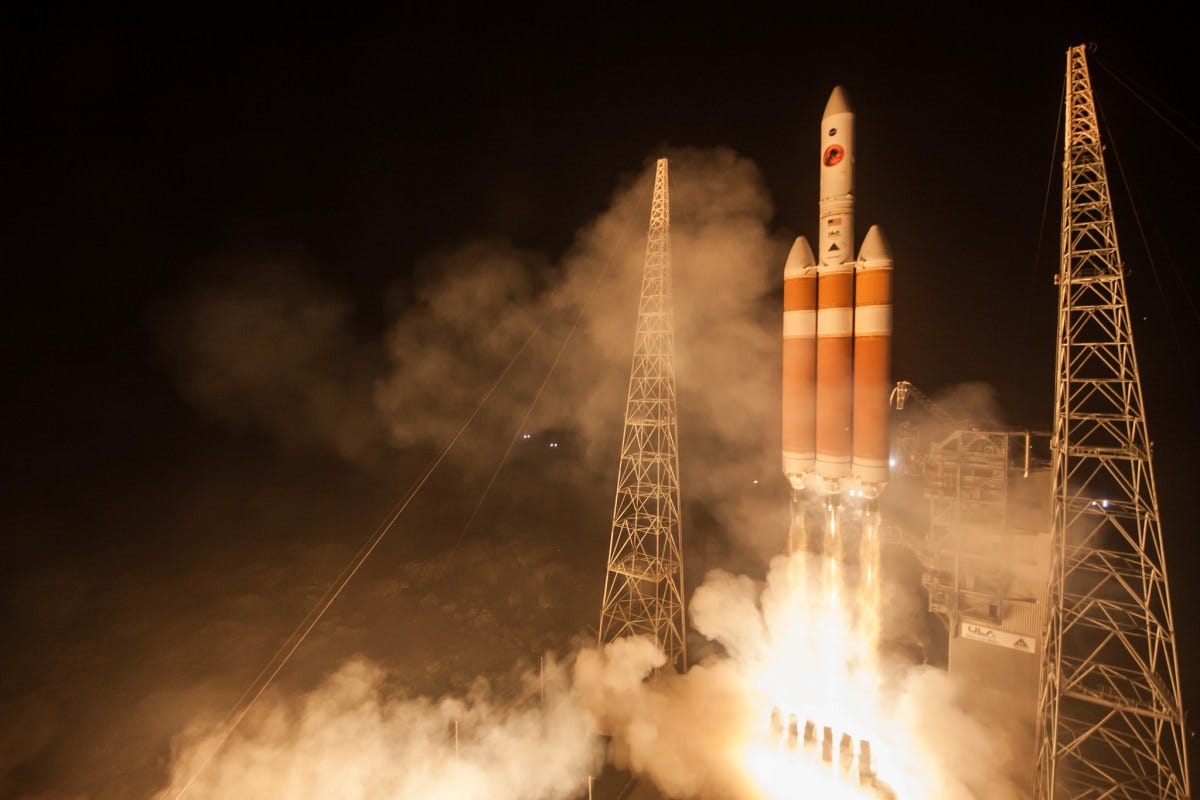
The Parker Solar Probe will use multiple gravity assists from Venus to gradually decrease its orbit around the Sun. In 2024, the Parker Solar Probe will fly closest to the Sun, merely ~6 million km above its surface. That’s about 9 times closer to the Sun than Mercury is!
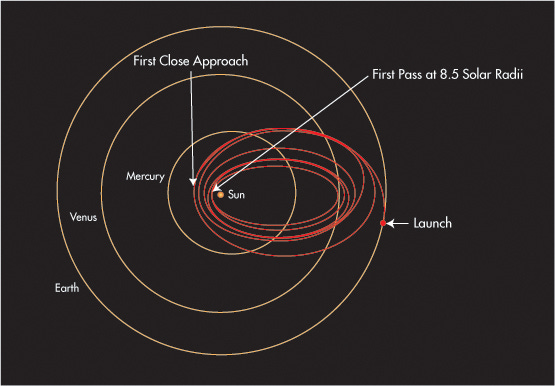
At this closest approach to the Sun, the Parker Solar Probe will be the fastest spacecraft ever, no matter how you measure it. At its peak, the probe will go as fast as 700,000 km/hr, which is insane to even think about. New York to Tokyo in under a minute, Earth to the Moon in half an hour, that’s how fast NASA’s Parker Solar Probe can go.
Facing the Sun’s intense heat and radiation
Being so close to the Sun means facing its intense heat and radiation. In fact, the spacecraft will fly into the corona where the temperatures are of the order of a million degrees Celsius. However, since the corona has a very low density, most of the heat that the spacecraft faces will be from direct sunlight only, which, at ~1400 degrees Celsius, is still burning hot.
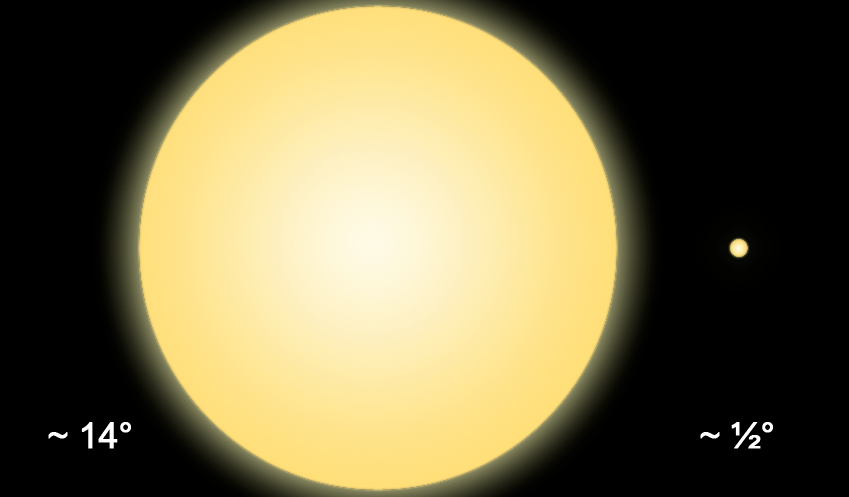
To protect the spacecraft from the intense heat, a special reinforced carbon-carbon composite will be used as a shield, like the ones on the nose of the Space Shuttle. The 4.5″ thick heat shield will keep the spacecraft’s scientific instruments at a comfortable 20 degrees Celsius at which they can operate normally. The shield will also help the spacecraft instruments withstand the crazy radiation levels, which is ~500 times more than here on Earth.
Stellar Science
With such high quality engineering making it possible for the spacecraft to operate in the Sun’s corona, the science instruments onboard are up for some cool tasks (pun totally intended).
- The FIELDS Experiment will take the first direct measurements of the electric and magnetic fields and plasma properties in the solar corona.
- The IS☉IS experiment (Integrated Science Investigation of the Sun) will measure the highly energetic charged particles (10 keV to 100 MeV) in the corona, helping us understand the coronal structures.
- To complement these experiments, WISPR (Wide-field Imager for Solar PRobe) will take beautiful images of the solar corona, solar wind, shocks, inner heliosphere and other structures for added context.
- The SWEAP (Solar Wind Electrons Alphas and Protons) experiment will measure the physical properties of the electrons, protons and alpha particles in the solar wind such as their abundance, velocity, density and temperature.
Putting these pieces of valuable data together, many prime mysteries concerning the Sun are expected to be answered. Some of them are:
- Determine the structure and dynamics of the magnetic fields in the corona that give rise to solar wind.
- Trace the flow of energy that heats the corona and consequently answer why it is much hotter than the Sun’s surface.
- Since the spacecraft will be in the region where it can actually see the solar wind particles go from subsonic to supersonic speeds, it can determine the mechanisms by which solar wind particles gain high energies.
Conclusion
Some incredible science is awaiting us and one that will also help shape our civilization in a more informed way. These are the baby steps that we need to take to slowly become a Type 1 civilization and more.
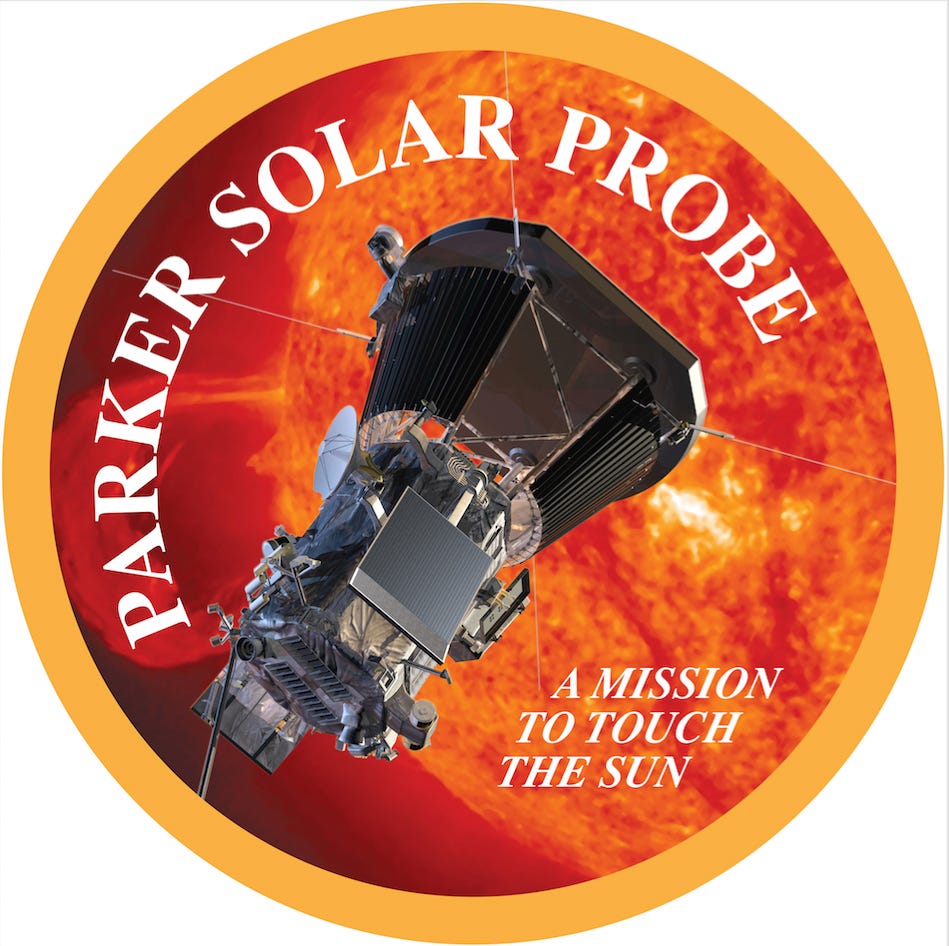
The best part about NASA’s mission to touch the Sun is that it will likely generate more questions than answers. Science!
What are you waiting for? Go ahead and explore the mission.
Like what you read? Support me to keep me going.
